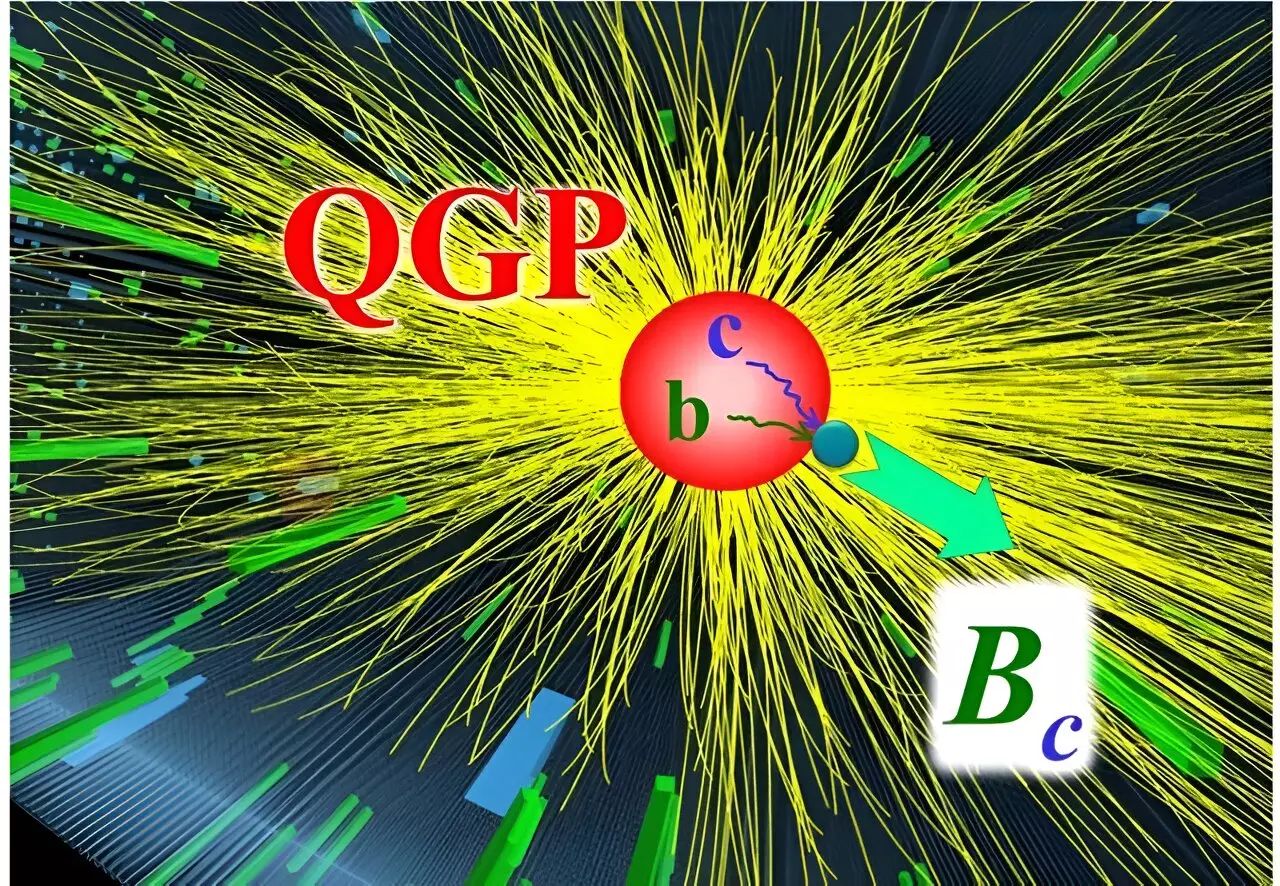Recent research conducted by the HEFTY Topical Collaboration delved into the recombination of charm and bottom quarks to form Bc mesons within the quark-gluon plasma (QGP). Through the development of a transport model, the researchers aimed to simulate the behavior of heavy-quark bound states within the expanding QGP fireball resulting from high-energy heavy-ion collisions.
The study emphasized the significance of identifying unique signatures of QGP formation, which distinguish it from other collision types like proton-proton collisions. Researchers focused on theoretical simulations of charm and bottom quark diffusion in the QGP and observed that the recombination of these quarks significantly boosts the production of Bc mesons, a phenomenon absent in proton-proton collisions.
By utilizing realistic spectra of charm and bottom quarks derived from their diffusion through the QGP, researchers were able to evaluate the recombination processes leading to the increased production of Bc mesons. The results indicated a substantial enhancement of Bc yield in lead (Pb) nucleus collisions compared to proton collisions, particularly in head-on collisions with slow-moving Bc mesons where a large QGP fireball formed.
The theoretical calculations align with initial data gathered by the CMS collaboration at the Large Hadron Collider, showcasing promise for the model’s accuracy. However, the current data lack sensitivity towards slow-moving Bc mesons, underscoring the need for future data to provide a more comprehensive assessment of this unique QGP signature.
By critically assessing the research findings, it becomes evident that the enhanced production of Bc mesons in the quark-gluon plasma presents a compelling opportunity for further exploration and validation through experimental data. The study not only sheds light on the intricate mechanisms within high-energy heavy-ion collisions but also underscores the importance of identifying distinct signatures of QGP formation that set it apart from other collision scenarios. The collaboration’s transport model serves as a valuable tool in simulating the behavior of heavy-quark bound states and elucidating the recombination processes that contribute to the increased production of Bc mesons, offering a deeper understanding of the complex dynamics at play in the QGP environment.


Leave a Reply